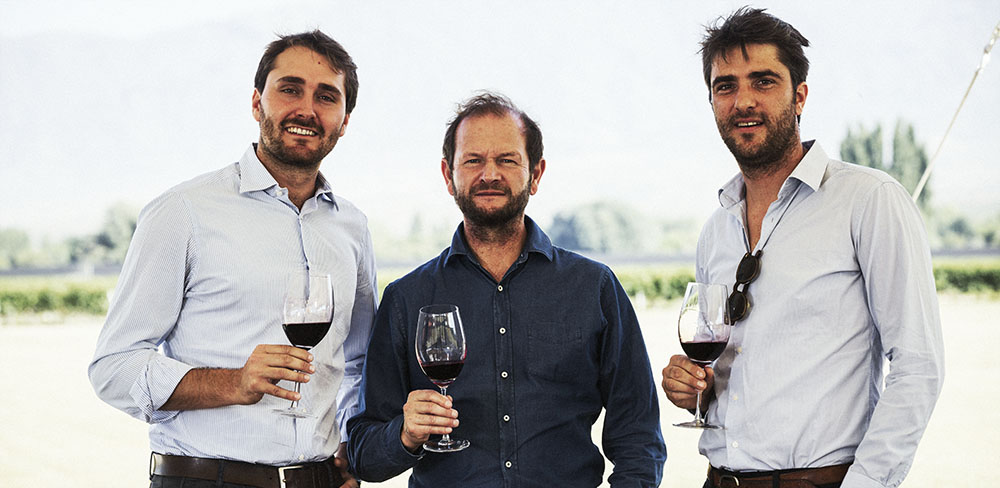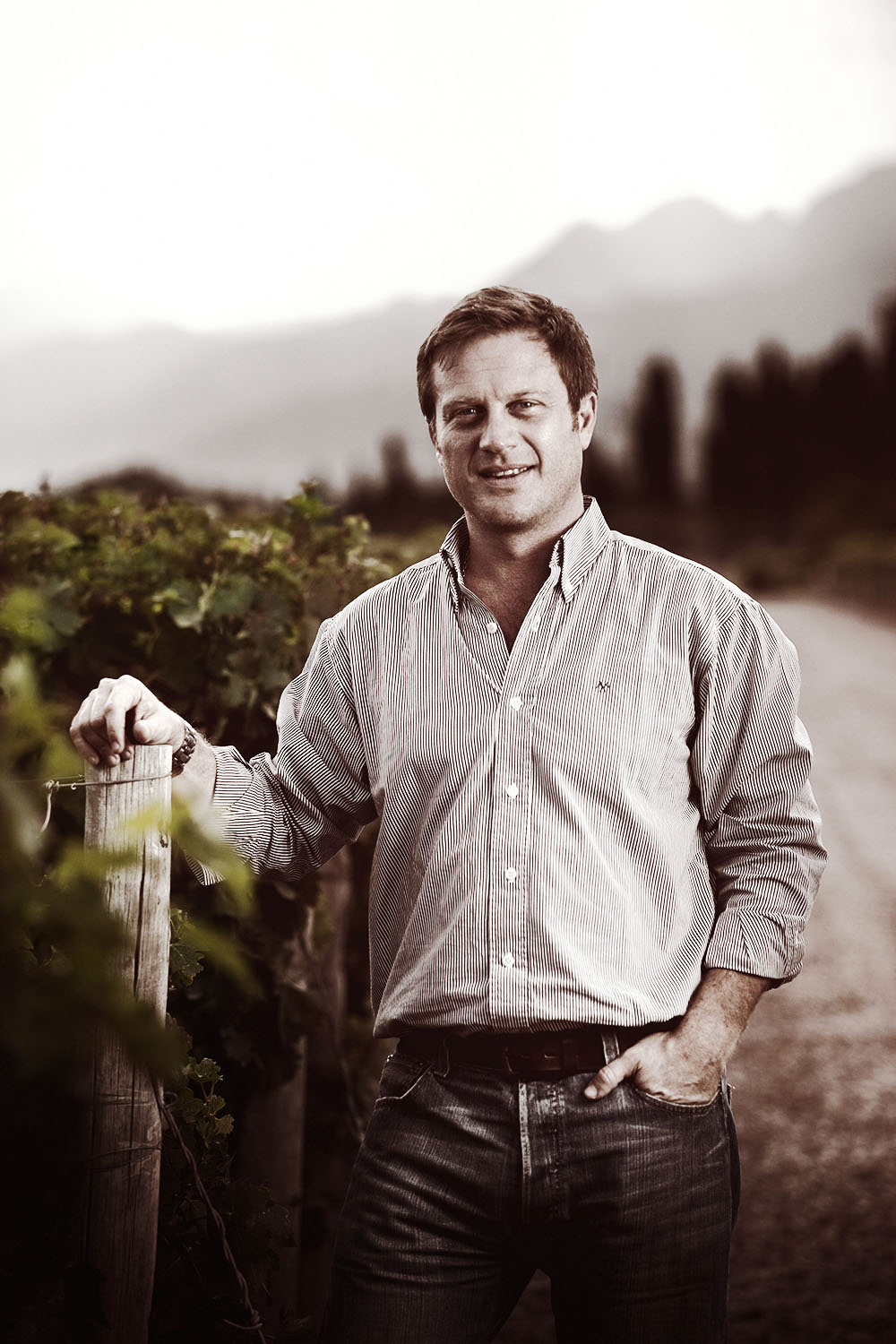
Veronique’s brains lay, unmoving, on the plate in front of her. I had the hunger, and those brains were what I craved. Veronique was my host (or, more accurately, babysitter) on this trip to Mendoza, Argentina. Though I was doing my best to be professional and treat her with respect, I yearned for her tender brains. And as much as I’d like to deny “her brains were fried,” they actually were.
By nature, I’m pretty shy, and I have never seen The Walking Dead, so it took a little (unusual) moxie for me to lean over, all friendly like, and slither in with: “Veronique, I think you are a real special person. So, like, can I eat your brains?”
I instinctively ducked and feinted left to avoid the right hook I expected (and always have expected in these sorts of encounters). But Veronique was a pro in the care and keeping of media department, and probably concluded, way ahead of the encounter, that curtailing my ability to write due to a concussion, embolism or not having my sheets tucked in, would have been a bad thing. “Sure, suck ’em up,” she said. Actually, what she said was, “Yeah, chow down you sick puppy,” but we’ll just let that go. I’m sure, at that moment, she was wishing she had a nice, stable accounting job that had nothing to do with chaperoning a media brat. Dead-ish or otherwise.
So I ate Veronique’s brains. Right off her plate. She also slipped me some tongue. It was beef, I assume, and not so offal … okay, stop me for god sake. The charming restaurant, Fuente y Fonda, had plenty of less challenging victuals on call for those in a less undead state than I. I groped across the table for some as another of my extremities plopped off …
Packing my bags, preflight
As I overpacked the night before my flight to Mendoza, I mused — glass of 2014 Terrazas de los Andes Reserva Torrontés in hand — about the state of the Argentinian wine industry, while casting a loving glance at my brand spanking new luggage.
I had finally decided that since I was now a “world traveller,” some decent haulage was due to me. Baggage on an airplane is sort of like socks in a dryer: what goes in doesn’t typically come out the same way. My old luggage was proof. So I had settled on a dashing new olive green TravelPro Platinum Magna 2. Apparently, it’s the choice of flight crews around the world, so I took that as a pretty decent endorsement.
Be that as it may, I thought about the progress the Argentinian wine industry had made in a pretty short time span, going from a country that produced vast quantities of pretty questionable swill for a largely domestic market, to a global exporting powerhouse with Malbec as its engine. What challenges lay ahead? Hopefully the next few days would tell me but I figured the biggest one would be convincing the world that taking a chance on an over $10 Malbec would likely be worth the gamble.
Hoofing in the foothills
“I have two rules when it comes to drinking wine,” cautioned Raúl Labat, owner of Argentina’s Estancia El Puesto. “The first is: I only drink wine when I’m eating duck. The second is: I only drink wine when I’m not eating duck.” We weren’t eating duck and Labat was pouring generous glasses of Terazzes do los Andes Reserva Chardonnay and Reserva Torrontés. In fact, we were hoovering back helpings of freshly baked empanadas, thankful for both the skill of the resident cook and Labat’s Rule #2.
Snugged up against the foothills of the mighty Andes, Estancia El Puesto offers a range of services and programs for those seeking relaxation amongst amazing scenery. What it was providing us on that April morning was a guided horseback excursion to check out the surrounding terrain. A light, low-hanging grey mist partially obscured our line of sight to the looming mountains, but none of us was complaining. With our horses hitched outside, we retreated into the cozy, fire-warmed comfort of El Puesto, enjoying Labat’s stories, photos, wine and empanadas. And, of course, beef. Always more beef.

My biggest beef
I’m not sure if there are vegans in Argentina. If there are, they must be rather peckish most of the time. Or they’re actually on the menu. Whatever. In any case, I was literally submerged in beef most of the time I was eating in Mendoza. It was not a bad thing. The meat comes from hill-slope-exercised, grass-fed beasties. And, man, is it good.
I actually had the best steak of my life at a modest little lunch for about 400-plus people during the kick-off of a campaign staged by the Terrazas de los Andes winery to promote the marriage of its red wines to local beef. It was an amazing piece of flesh. When it was set down in front of me, my first reactions was, “More brains!” Actually, that’s not true. My first reaction was, “You’re kidding, right?” I mean, you could have built real estate on the thing. And it was (only) lunch.
But, guess what, it all went down the hatch, expedited by glasses of Terrazas Single Vineyard Malbec 2012. The meat had a certain lightness that I previously had not experienced in a steak. And the wine matched heroically. Compliments to the chef. And he was quite the chef.
Essentially Argentina’s answer to Mario Batali and Bobby Flay, Francis Mallmann is a chef and restaurateur who has obviously mastered the art of beef 10,000 ways. Well, actually, about seven ways. See, the Argentinian style of cooking (mostly beef) typically takes one of seven different styles, all using wood. Which technique Mallmann used at lunch didn’t really matter to me: I had absolutely no beefs with the beef.
Champagne wishes and (beef) dreams
“It’s funny to think,” I recalled, as I stared at the sun setting on the snow-capped Andes and slipped into a sort of “tell me I never have to leave” delusionary state, “that one of the best champagne experiences I’ve ever had would be here, in Argentina.”
Yet it was. A presentation of some fine vintages of Möet & Chandon’s best cuvées, including the unveiling of the venerable firm’s most luxurious offering. Led by Benoît Gouez, Möet’s Chef de Cave, the decadent experience started with the lemon custard, brioche and hazelnut scented Brut Imperial, followed by the 2006 Grand Vintage (aromas of marzipan, buttered toast and baked apple, with rich, toasty flavours leaning towards baking spice and mild anise).
Next up was the stunning 1999 Grand Vintage. With eight years on lees and another eight in the bottle, it offered up a complex smoky, mineral-tinged nose with a dash of lemon polish and toasty/smoky complex flavours. The night capped off with the captivating, complex and unique MCIII. Space doesn’t allow me to fully elaborate on how this rich, intense bubbly with overtones of a top-notch white Burgundy came to be, but the story’s pretty interesting. (Look it up!)
Hanging on the Terazzas
The guest house at Terrazas do los Andes winery was to be headquarters for my Mendoza “research assignment.” Modern, well equipped and, well, quite pretty (like the winery itself), the kitchen had a slab of … Guess what? (Hint: not brains.) If you guessed beef … in front of me only a few minutes after I had unpacked. Herve Birnie Scott, Director of Terrazas, was enthusiastic about what lay ahead for the winery, and for Argentina’s wine industry in general. Turns out the future will depend on both attitude and altitude.
“The altitude of the vineyard imparts a natural freshness to our wines; but it’s not the only thing that matters,” he revealed. “Before cultivating a vineyard — or even planting one — we do a thorough soil analysis, digging hundreds of holes in the ground to help us define the sub-terroir that exists within the same vineyard. The soil variations within these sub-terroirs allow us to determine the best way to manage specific blocks — or even blocks within blocks — in terms of viticultural practices.”
Pretty scientific, but Scott emphasized that only by determining the vast nuances that lay within each vineyard, and treating them accordingly, would truly great wines be realized.
“In a way, we follow the practices of great Old World appellations,” he opined, “with small clos or blocks being managed individually and differently.”
A tasting with winemaker Gonzalo Carrasco certainly showed that the efforts being undertaken at Terrazas were paying off. The whites — Terrazas do los Andes Reserva Chardonnay 2015 and Reserva Torrontés 2015 — were elegant and balanced while the reds (which included, among others, the Terra do los Andes Malbec Single Vineyard Las Compuertas 2012, Cabernet Sauvignon Single Vineyard Los Aromos 2012 and Malbec Single Parcel Les Castaños 2012) were complex and refined, showing none of the overwrought “fruit bomb” characteristics that have characterized the “old-style” Argentinian tintos.
Clearly the research and attention to elevation and vineyard management was paying off in a dramatic way.
A horse with a big name
Some 1070 metres above sea level, the pristine vineyards of Cheval des Andes stretch out towards the snow-capped peaks of the mountains. Located in Luján de Cuyo, one of the most coveted grape-growing regions of Mendoza, Cheval des Andes represents a unique marriage between France’s Premier Grand Cru Classé A Saint-Emilion Château Cheval Blanc and the Terrazas de los Andes winery.
The warm morning fall sun shone from a crystalline blue sky as Gustavo Ursomarso, Vineyard Manager for both Terrazas de los Andes and Cheval des Andes, led us through the vines and discussed the joint winery’s objective.
“We are aiming for a French style that emphasizes elegance,” he pointed out. “Most Argentinian wines are big, full and rich. The wines of Cheval des Andes are completely different.” In fact, the philosophical aim of Cheval des Andes is to mirror the vinous stylings of its French sister. Similar to its partner winery in France, Cheval des Andes makes a single wine from a blend of black Bordeaux varietals, which are fermented separately. The percentage of each variety in the final assemblage varies from year to year. Tasting through a series of vintages suggested that what the winery was doing was far from “typical Argentina.”
The showroom/tasting room/kitchen/thingy where we did our sampling was much like the wine itself: elegant, sleek and an extension of the surroundings. Enclosed in glass and enveloped in cedar, it’s a modern designer’s fantasy. Starting with the mineral/currant/sandalwood and herbal Cheval des Andes 2012 and capping with the graphite-laced, cassis-infused 2005 (still a baby) with the tobacco leaf, plum, slate and smoke-tinged 2010 sandwiched in between (with some lovely sparkling Baron B rosé acting as a palate-refresher), I had to agree that the DNA of Saint-Émilion certainly coursed through the blood — and wine — of Cheval des Andes.
In the words of Technical Manager Lorenzo Pasquini, “Balance before power; elegance before intensity.”
